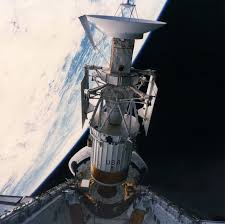Magellan Mission : NASA

After analyzing the archived data from NASA’s Magellan mission, scientists say they observed new lava flows on Venus, suggesting that the planet was volcanically active between 1990 and 1992.
- Magellan Mission was a deep space mission launched by NASA on May 4, 1989, to explore the planet Venus.
- It was launched from Cape Canaveral aboard the space shuttle Atlantis.
- It was the first interplanetary mission launched from the Space Shuttle and the first spacecraft to use the Inertial Upper Stage booster.
- It was named after the Portuguese explorer Ferdinand Magellan, who was the first to circumnavigate the earth.
- The primary goal of the Magellan mission was to map the surface of Venus using radar imaging, as the thick atmosphere of the planet made visual observation difficult.
- The Magellan spacecraft, which arrived at Venus in 1990, made the first global map of the surface of Venus as well as global maps of the planet’s gravity field.
- The mission produced surprising findings about Venus, including a relatively young planetary surface possibly formed by lava flows from planet-wide volcanic eruptions.
- In October 1994, the Magellan spacecraft intentionally plunged to the surface of Venus to gather data on the planet’s atmosphere before it ceased operations.
- It marked the first time an operating planetary spacecraft had been intentionally crashed.




